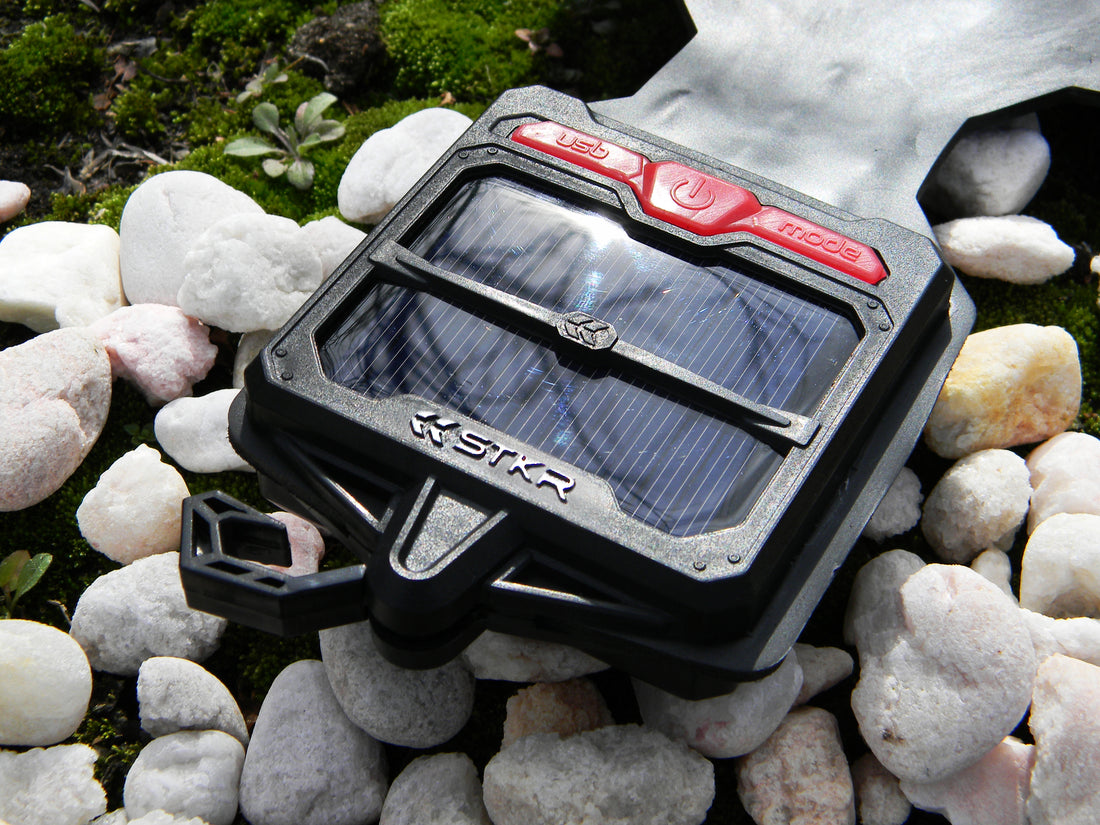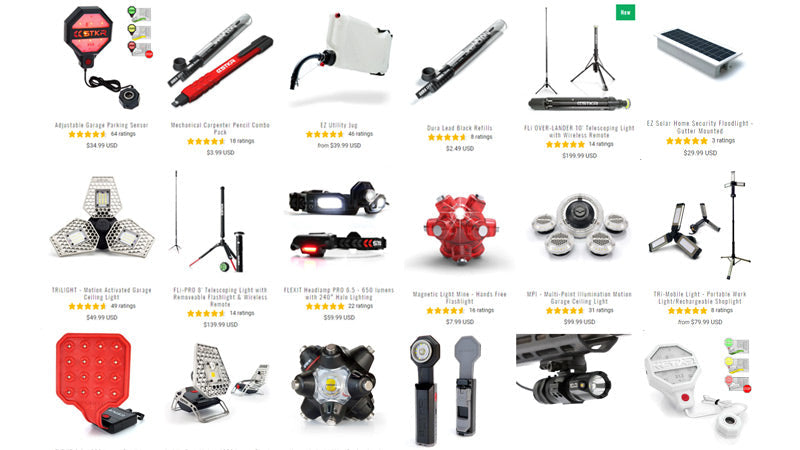
Rechargeable VS Non-Rechargeable Flashlights | Pros & Cons of Each
Share
Rechargeable flashlights are becoming popular in recent times, especially since the technology around rechargeable batteries has improved since their early days. The up-and-coming rechargeable flashlights have instigated much debate as to which type of flashlight, rechargeable or non-rechargeable, is the better type of flashlight for EDC use, emergency use, and camping purposes.
Modern rechargeable flashlights have improved to the point that they have the edge in performance, longevity, and reliability over the more common non-rechargeable flashlights. Both technologies work well, and there are applications where both would be the right choice for a flashlight.
In order to establish which of these flashlight technologies provide the best benefits for use in the field, and even for use around the house, we need to take a closer look at both of these flashlight powering technologies and examine what benefits one can offer over the other for each type of use. This will give you the knowledge you need to choose the best lighting option for your particular requirement.
Are Rechargeable Flashlights Better Than Battery Powered
Rechargeable flashlights in their early days had some flaws that seem to have set a mental precedent about what people come to expect from a rechargeable flashlight. Those early days of the rechargeable flashlight did not give the reputation of this technology much to brag about, but much has changed since those times!
Historically, rechargeable flashlights were not very reliable; they did not hold their charge very long, they were bulky, and they took a long time to recharge. Many of these aspects relating to rechargeable flashlights have changed with the advances made in battery and LED technology.
These technological advancements have changed the playing field as far as rechargeable flashlights go, but is it enough to give the traditional battery-powered, non-rechargeable flashlights a run for its money? We will investigate the advances that rechargeable flashlight technology has made and compare them to the pros and cons of non-rechargeable technology to see which one would be the better fit for your requirements.
Pros Of Rechargeable Flashlights
A rechargeable flashlight is a great concept and there are many benefits around this feature of the flashlight. There are numerous positives about this type of technology that is convincing many people to opt for the rechargeable version rather than traditional non-rechargeable flashlights.
- Bright light or lumen output. Historically, rechargeable flashlights were not as bright as traditional flashlights, and if you run them on maximum brightness, the batteries did not power the flashlight for long. The improvement of LED technology has placed bright illumination in the realm of rechargeable flashlights because of their low power usage. If you want to discover more about lumens and how they work, we have a dedicated explanation of what lumens mean when talking about lamp brightness.
- Long battery life. The advancement in rechargeable battery technology has allowed these batteries at least equal, and in many cases, exceed the capacity of non-rechargeable batteries. As an example, the STKR Concepts 1000 Lumen Dual LED Tactical Flashlight is a rechargeable flashlight with 1000 lumen capability and can run for 7 continuous hours on a single charge of the battery.
- Versatility. Many rechargeable flashlights have battery compartments or battery cartridges that are capable of accepting AAA or AA non-rechargeable batteries as an alternative. This solves the major issue of being unable to charge your rechargeable flashlight if you find yourself with no electricity!
- Environmentally friendly. Rechargeable batteries can be used many times over as opposed to non-rechargeable batteries, which are one-time use only.
- Convenience. Rechargeable flashlights can be charged from a USB port on a computer, in your car, from the mains electricity, or even from a solar charger.
- Lower running costs. Even though rechargeable flashlights may be a little more expensive than non-rechargeable, and rechargeable batteries may be more expensive to replace, they do not need to be replaced as often as non-rechargeable batteries.

Cons Of Rechargeable Flashlights
As with any technology, rechargeable technology is not perfect; there are some disadvantages to rechargeable battery technology.
- Larger size. Rechargeable flashlights are generally physically larger than non-rechargeable flashlights. Their additional bulkiness may make them undesirable for some applications.
- Electricity is needed for charging. Even though this is a disadvantage for rechargeable flashlights, it is mostly mitigated by the fact that many of these torches can accept non-rechargeable batteries if needed.
- Higher initial cost. Rechargeable flashlights can have a higher initial cost, but as the technology is improving and demand is increasing, the price gap is closing between the two technologies.
Pros Of Non-Rechargeable Flashlights
Standard battery-powered flashlights, or non-rechargeable flashlights, have been around for a long time, and we have relied on this technology to provide us with light very successfully for many years. As a result, there are still many advantages to using this technology to power your flashlight.
- Smaller size. The smaller, compact size of non-rechargeable flashlights is a benefit when you need to pack light. Although modern rechargeable technology is allowing rechargeable flashlights to be made physically smaller than before.
- Batteries are cheap. The non-rechargeable batteries are cheap, but you are going to spend a lot of money in the long term on these disposable batteries.
- Batteries are easily available. You can buy AA and AAA batteries almost anywhere, even at gas stations, which is a convenience that people find helpful.
- Bright light or lumen output. Non-rechargeable flashlights also make use of the improved LED technology to be able to produce a bright light and use less battery energy to do so, extending the life of the batteries.
- No electricity is needed to recharge. You do not need to seek out a source of electricity to recharge batteries, but you will need to carry extra batteries.
- May be able to use rechargeable batteries. Some non-rechargeable flashlights can be powered by rechargeable batteries, but you will not be able to charge these batteries in the flashlight. You would need to remove them from the flashlight and charge them in a separate charging unit.
If you prefer to use non-rechargeable flashlights, take a look at our offering in this range with the STKR BAMFF 2.0 and 4.0 flashlights. They are bright, compact, durable, and rugged enough for all your outdoor activities!
Cons Of Non-Rechargeable Flashlights
Even though non-rechargeable flashlights have been around for some time and we have used this technology successfully for decades, there are some negatives for this solution.
- Shorter shelf life. Non-rechargeable batteries tend to leak, especially when left in the flashlight for long periods without being used. They also do not hold their charge as long as rechargeable batteries when stored.
- Need to carry spare batteries. Adding additional batteries to your gear can significantly increase the weight that you need to carry; while investing in a solar charger, you could recharge your flashlight and other devices out in the field. Some flashlights even have a built-in solar charging option like our Flexit Solar.
- Shorter working life. During use, non-rechargeable batteries do not illuminate your torch for as long as modern rechargeable batteries do. This means you could go through 2 sets of non-rechargeable batteries compared to a single charge on a rechargeable flashlight.
- Running out of batteries. If you use up your supply of batteries, the flashlight will be useless to you until you can source a new set of batteries.
Most of these negatives to non-rechargeable flashlights we have learned to work around and make preparations for. This means that most people have developed strategies to deal with the shortcomings of this technology and continue to use it.
Conclusion
Both rechargeable and non-rechargeable flashlights have relevant benefits and shortcomings, and for this reason, I prefer to have a belt-and-braces approach and use flashlights of both technologies. I will have a rechargeable headlamp but keep a non-rechargeable light in my backpack with spare batteries.
This way, you have options with the convenience of a rechargeable flashlight and the trusty non-rechargeable as a backup!




